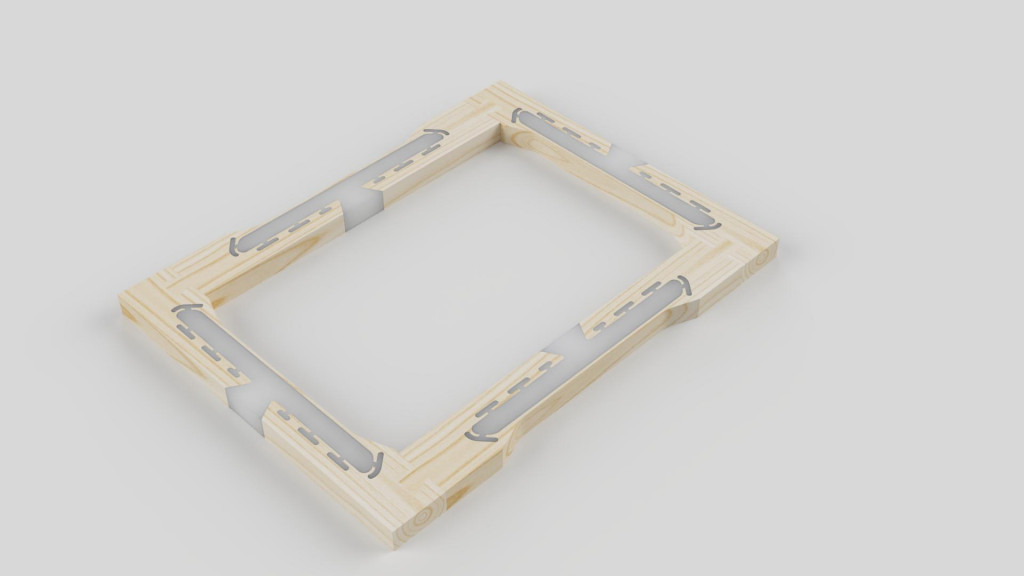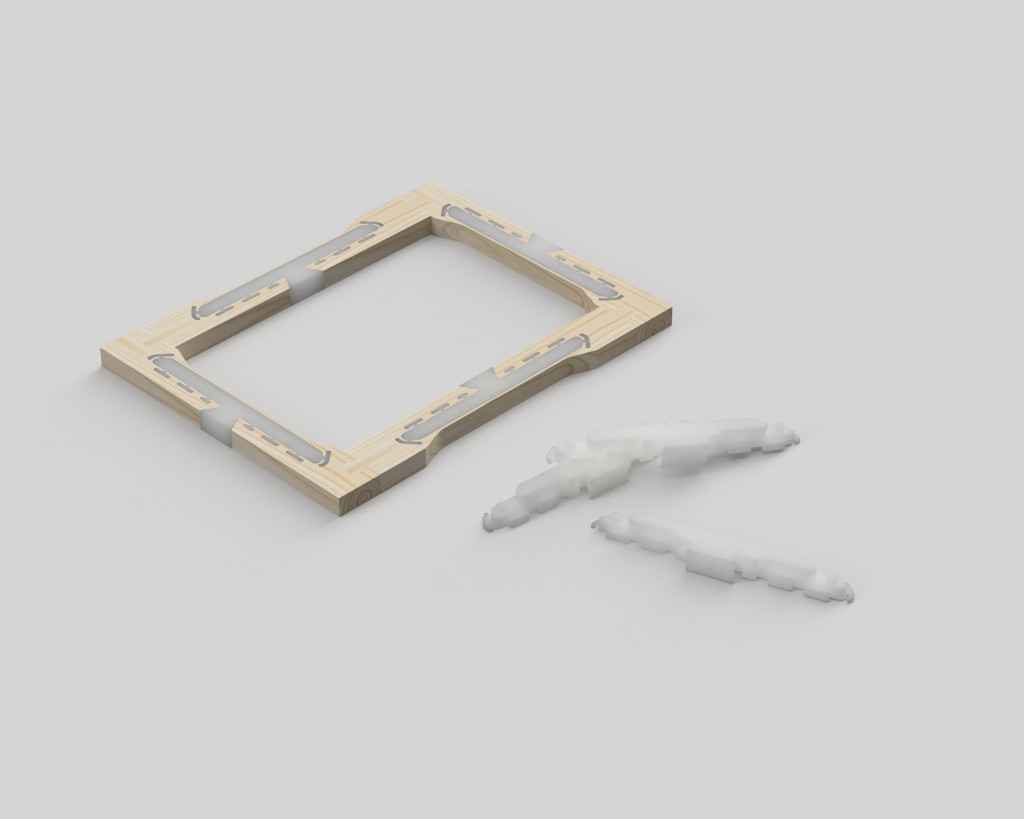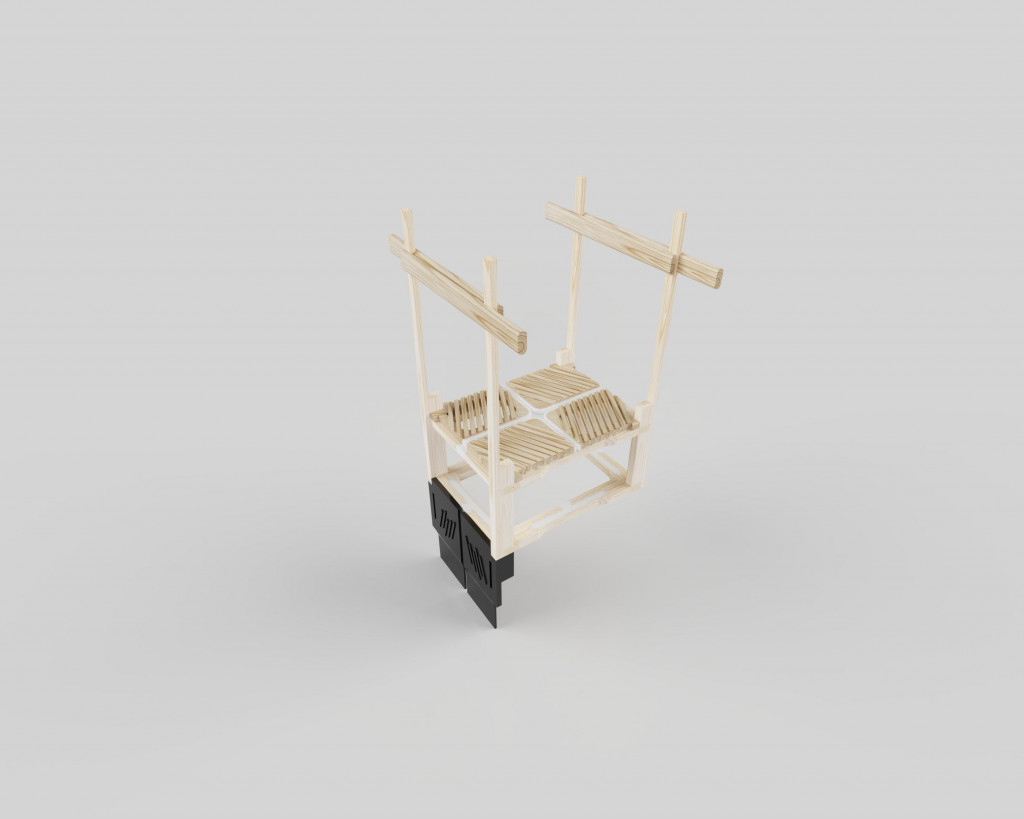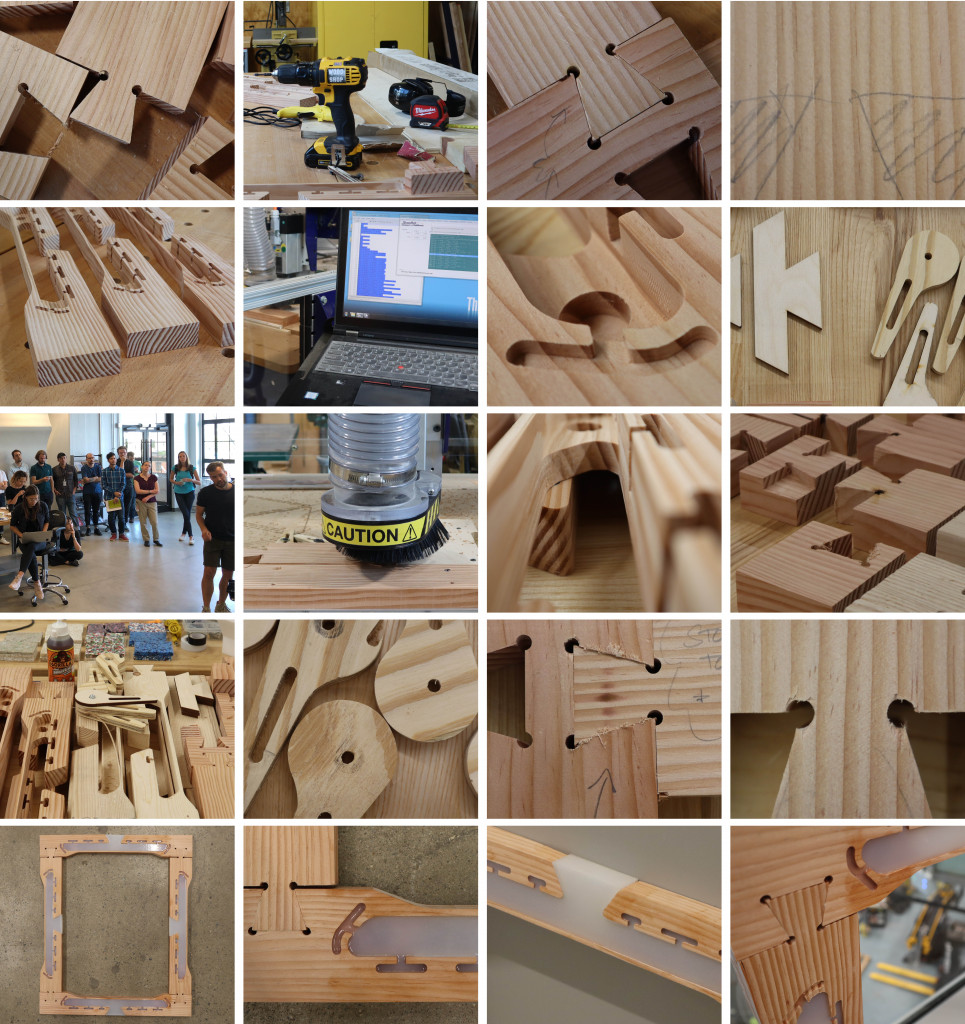BUILD SPACE REPORT
11th July-21th August
Intro to Report
This summer I have been a resident at Autodesk Technology Center at the BUILD Space in Boston where I have had the chance to accelerate my project in highly advanced facilities with access to simulation-software and industry partners. Hands-on access to machines made it possible to completely reiterate the joint itself using extensive CAM techniques and software directly in-tune with the high-end facilities and fabrication space at the BUILD Space.
Goals
To continue to explore joint design & to make a 1:1 rectangular unit cell.
Progress
Timeline of tasks and completed work
July 11th to July 20th
– Introduction to studio spaces & general safety training
– Woodshop: Introduction: Sanders, Bandsaw, Chop-Saw
– Woodshop: Intermediate: Jointer & Planers
– Woodshop: Advanced: Shopbot Training
– Laser cutting: Training
– 3D printing: Training
– Fusion 360: Milling strategies
– Fusion 360: Simulation
– Fusion 360: Representation
– Robotics: Safety Protocol & Introduction
July 20th to August 5th
– Rhino + Gh: Articulating Joineries: Extending Length of Wood Strip
– Rhino + Gh: Articulating Joineries: Working w/ Silicone Volume
– Rhino + Gh: Articulating Joineries: Rounding & Smoothing Cavity Envelope
– Rhino + Gh: Exploring Micro Geometry & Anchoring
– Fusion 360: Creating Machining Program: 3D: Adaptive Pocketing: “Inside_Cavity-01.shp”
– Fusion 360: Creating Machining Program: 3D: Adaptive Pocketing: “Outside_Cavity-01.shp”
– Shopbot: Creating Improvisational Rig w/ Scrap Material (Pine Wood)
– Woodshop: Stock: Pine Wood: Moisture Avg. Level: 9 %
– Shopbot: Running “Inside_Cavity-01.shp”: 24 min (w/ ¼’’ flat end mill)
– Shopbot: Running “Outside_Cavity-01.shp”: 16 min (w/ ¼’’ flat end mill)
– Fusion 360: Changing Machining Programs from Adaptive to Pocketing
– Fusion 360: Changing Feeds & Speeds in Machine Program
– Shopbot: Running “Inside_Cavity-03.shp”: 18 min (w/ ¼’’ flat end mill)
– Shopbot: Running “Outside_Cavity-03.shp”: 10 min (w/ ¼’’ flat end mill)
– Laser cutting: Assisting Positioning Rig
July 5th to August 13th
– Rhino + Gh: Measuring Silicone Quantity
– Ordering Silicone: Smooth-On: Dragon Skin 30: 1 Gallon
– Composite Lab: General Training
– Rhino + Gh: Joinery Revision: Shorter Stock: 2 ft
– Rhino + Gh: Custom Workholders
– Laser cutting: Custom Workholders: Test (with ¼’ soft-wood)
– Shopbot: Custom Workholders: 10 Nested Items
– Fusion 360: Simulating Joint Instance
– Shopbot: Installing Custom Workholders- Shopbot: Re-running “Outside_Cavity-03.shp”
– Rhino + Gh: Articulating Joineries: Tolerance changes
– Fusion 360: Creating Machine Program: St. Offsets + H. Roughing: “Inside_Cavity-04.shp”
– Fusion 360: Creating Machine Program: St. Offsets + H. Roughing: “Outside_Cavity-04.shp”
– Shopbot: Running “Inside_Cavity-04.shp”:
– Shopbot: Running “Outside_Cavity-04.shp”
– Fusion 360: Changing Feeds & Speeds in Machine Program
July 14th to August 21th
– Ordering Wood: Sterritt Lumber: Douglas Fir (2x4x8 KD Premium)
– Woodshop: Stock: Douglas Fir: Moisture Avg. Level: 5 %
– Stock Handling: Plainer + Jointer: Flattening & Parallel Finishing
– Shopbot: Re-running “Inside_Cavity-04.shp”:
– Shopbot: Re-running “Outside_Cavity-04.shp”
– Rhino + Gh: Articulating Joineries: Dovetail Connection: Triangular
– Rhino + Gh: Articulating Joineries: Dovetail Connection: Widths + Lengths
– Fusion 360: Representational Documents
– Fusion 360: Creating Machining Program: 3D: Pocketing: “Female_Dovetail-01.shp”
– Fusion 360: Creating Machining Program: 3D: Pocketing: “Male-Dovetail-01.shp”
– Shopbot: Running “Female_Dovetail-01.shp”: 5 min (w/ ¼’’ flat end mill)
– Shopbot: Running “Male_Dovetail-01.shp”: 5 min (w/ ¼’’ flat end mill)
– Shopbot: Repositioning Piece + Re-Installing C. Workholders
– Shopbot: Running “Female_Dovetail-01.shp”: 5 min (w/ ¼’’ flat end mill)
– Shopbot: Running “Male_Dovetail-01.shp”: 5 min (w/ ¼’’ flat end mill)
– Fusion 360: Removing Stock to Leave Feature + Drill Corner Holes Last
– Shopbot: Re-Running “Female_Dovetail-01.shp”: 5 min (w/ ¼’’ flat end mill)
– Shopbot: Re-Running “Male_Dovetail-01.shp”: 5 min (w/ ¼’’ flat end mill)
– Shopbot: Running Program Sequence: “Inside_Cavity-04.shp”, “Outside_Cavity-04.shp”, “Female_Dovetail-01.shp”, “Male_Dovetail-01.shp”.
– Post-Finishing: Joints: Sanding Edges + Cleaning
– Post-Finishing: Preparing for Casting: Sealing Edges w. Blue Tac
– Post-Finishing: Creating Casting Rig
– Composite Lab: Casting Into Cavity: Cure Time: 16 hrs
– Composite Lab: Revealing Cast & Removing Rig
– Composite Lab: Trimming Edges w. Knife
– Composite Lab: Cleaning Faces
– Studio Space: Assembling Module
– Studio Space: Documentation
Documentation (Video)
A video of the residency program
Conclusions
During the time I was there – a 1:1 module was created – forming a structural layer for a typical bridge segment. The whole experience was incredibly engaging and forced the project to be re-thought and drawn in different softwares and simulation engines, but as a result – it only strengthening it. The final module is considered as an exhibition-piece and proof of concept model. Therefore, its end-dovetail detailing is suspect to change prior to any structural performance tests. The training at Autodesk was very resourceful, and provided an in-depth run-through of the labs, exploring all inventory and tools needed in order to make the most of the residency.
Future Objectives
The next steps for Wood+ would be to create the full bridge segment, meaning two-unit cells + detailing (hand-railing, deck, structural floor frames, ballustrades). This would enquire a similar workflow, but with additional tolerance tests and stock handling prior to running the final milling files. It would also be necessary to do a total stress-analysis of the module under pressure once assembled. This would indicate which areas of the module that needs further design development.
Problems Encountered
During the residency I experienced quite a few tolerance issues. I found that this was often related to the stock either moving while milling or varying stock sizes. In the end this was handled by processing the wood through the jointer and planer prior to the milling, as well as creating custom workholders to keep the piece in-place while milling.
THIS RESEARCH PROJECT HAS BEEN SUPPORTED IN PART BY AUTODESK BUILD GRANT, UNDER THE IAAC/ AUTODESK BUILD SPACE RESIDENCIES




